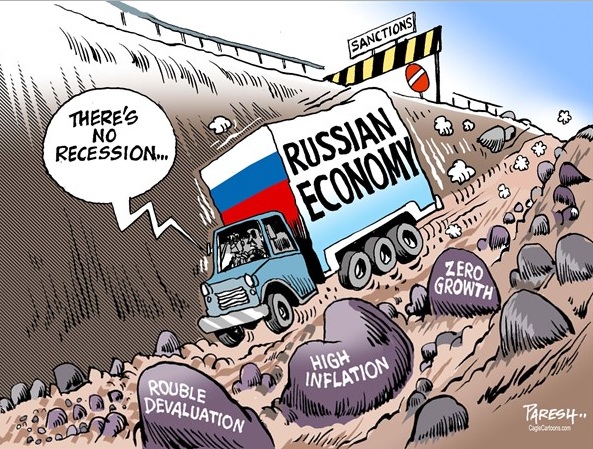Bruegel writes: The Russian economy grew rapidly between 2000 and 2007, but growth decelerated after the 2008-09 global financial crisis, and since mid-2014 Russia has moved into recession. A number of short-term factors have caused recession: lower oil prices, the conflict with Ukraine, European Union and United States sanctions against Russia and Russian counter-sanctions. However Russia’s negative output trends have deeper structural and institutional roots. They can be tracked back about a decade to when previous market-reform policies started to be reversed in favour of dirigisme, leading to further deterioration of the business and investment climate.
Russia must address its short-term problems, but in the medium-to-long term it must deal with its fundamental structural and institutional disadvantages: oil and commodity dependence and an unfriendly business and investment climate underpinned by poor governance. Compared to many other commodity producers, Russia is better placed to diversify its economy, mostly due to its excellent human capital. Ruble depreciation makes this task easier.
Recession in Russia has become a fact. Seasonally adjusted quarterly GDP peaked in the second quarter of 2014 and then started declining. In the third and fourth quarters of 2014, the pace of decline was very slow (Figure 1) and therefore growth for 2014 overall remained positive (+0.6 percent, Figure 2).
However, the first half of 2015 brought an acceleration of the negative trend. Real GDP declined by 2.2 percent in Q1 2015 and by 4.6 percent in Q2 2015, compared to the respective quarters of 2014.
Recession was no surprise. After the global financial crisis of 2008-09 Russian growth did not resume its pre-crisis pattern. From 2010-12 growth was muted but reasonable, with annual GDP growth of 5.4 percent, 4.3 percent and 3.4 percent respectively (although from a low level in 2009). However, already in 2013 – well before the conflict with Ukraine and resulting international sanctions, and the oil-price decline – there was economic stagnation.
Russia was never a star reformer. Its economic transition in the 1990s was long and painful because of the complicated legacy of the Soviet system (structural distortions, macroeconomic imbalances and the absence of market institutions) and because of insufficient political support for radical, market-oriented reforms.
Furthermore, the first years of Vladimir Putin’s presidency (2000-03) brought completion of many overdue reforms, such as land reform, simplification of the tax system (the flat 13 percent personal income tax rate), elimination of fiscal imbalances, continuing privatization, limited opening to foreign investors, deregulation and adoption of several pieces of market-oriented legislation. At that time, Russia could be considered a country that completed its basic transition agenda and managed to build a market economy based on private ownership, even if several distortions and imperfections continued to exist.
The turning point came in 2003 with politically motivated crackdown on the largest Russian private company, Yukos (its assets were subsequently taken over by the state-owned Rosneft). As result, the private sector share of GDP decreased from 70 to 65 percent between 2004 and 2005. Depth of the Russian Recession

